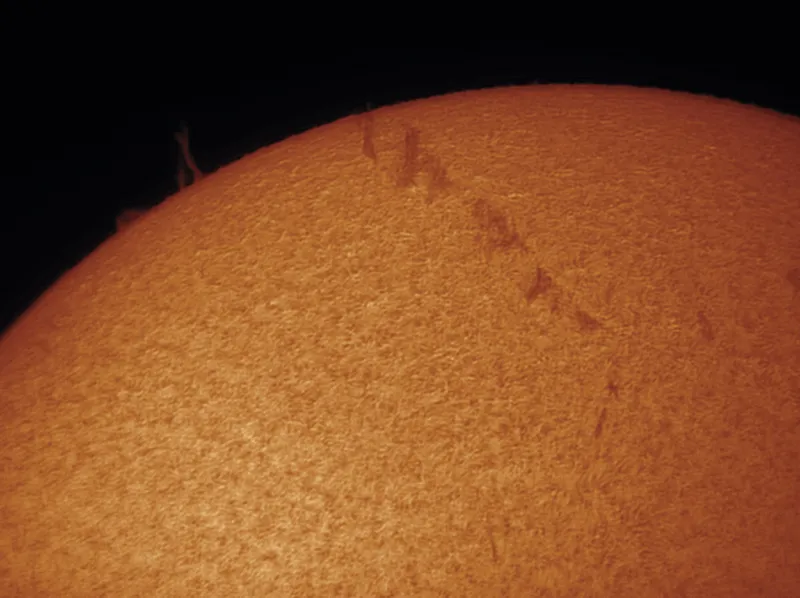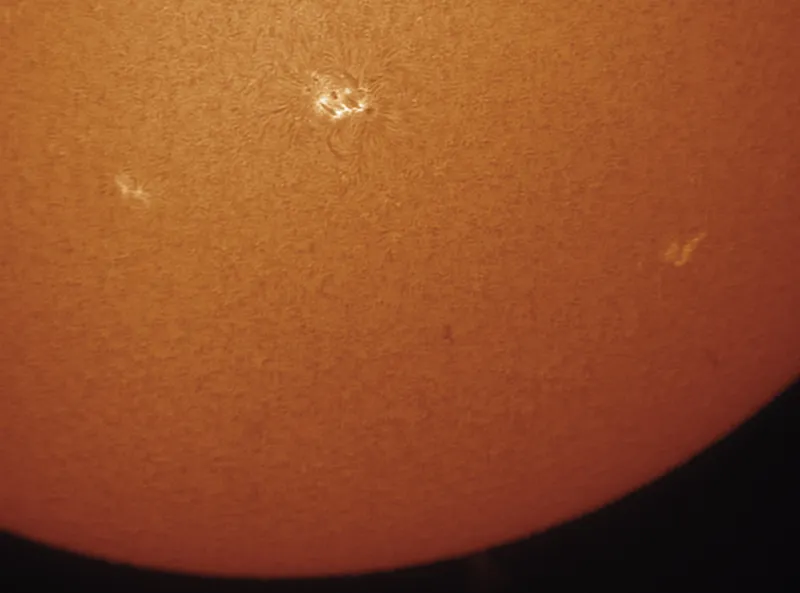The Double-Stacked Personal Solar Telescope may look similar to the PST, but it has a second etalon screwed into the front lens cell.
This arrangement further reduces the telescope’s bandpass to 0.5Å, increasing the definition of surface features such as dark filaments and bright plage areas.
One downside to this reduction in bandpass is a reduced visibility of prominences.
Indeed, during our tests we did notice a slight dimming, but bright prominences were still impressive.
Want to observe a solar eclipse? Find out when the next eclipse is taking place.

It’s worth noting that if you feel that you’re missing out on some prominence action with the DS PST, it’s very easy to unscrew the second etalon and turn this model back into a standard PST.
The second etalon covers the full aperture as it screws into the front of the telescope, and it was the same as the main etalon used in the SolarMax 40.
The Coronado design involves using a thin spacer inside the etalon assembly to help keep the optically flat plates parallel with one another.
This method is known as an obstructed etalon.It’s less expensive to manufacture than an unobstructed one.
With the second etalon screwed into the tuned PST body we found that further tuning tweaks could be made easily by turning the tilt wheel on the second etalon’s ‘T-Max’ tuner.
Apart from allowing you to tune into the best view possible, it can also be used to follow material speeding off the Sun’s disc, which may be shifted away from the main H-alpha wavelength.

We did notice that the tuning unit cast a shadow on the aperture of the solar finder preventing it from working correctly.
We noted that a faint filament train, hardly visible in the other scopes, could be made quite dark through the DS PST and this really helped bring out its detail.
Hot plage areas that we missed through the other scopes also stood out like beacons.
For imaging, the DS PST suffers from the same lack of ‘in-focus’ for our camera as the PST, but the 2x Barlow solution worked here too.
Filaments came out well in images taken using the DS PST, appearing noticeably more opaque than we achieved using the wider-bandpass scopes.
We were impressed with the visual performance of the DS PST.
The 5mm blocking filter installed in the eyepiece holder is adequate, but doesn’t provide a very comfortable view – something that was really apparent after using the SolarMax 40, which uses a 10mm blocking filter for a more expansive view.
Even so, this is a superb scope, ideal for increasing the visibility of subtle features that wider bandpass instruments may struggle with.
Vital stats
- Price: £899.00
- Aperture: 40mm
- FocalLength: 400mm
- Eyepieces: K20 (20x); 1.25-inch fit
- Weight: 1.7kg
- Supplier: Telescope House
- Telephone: 01342 837098
- Website: www.telescopehouse.com
